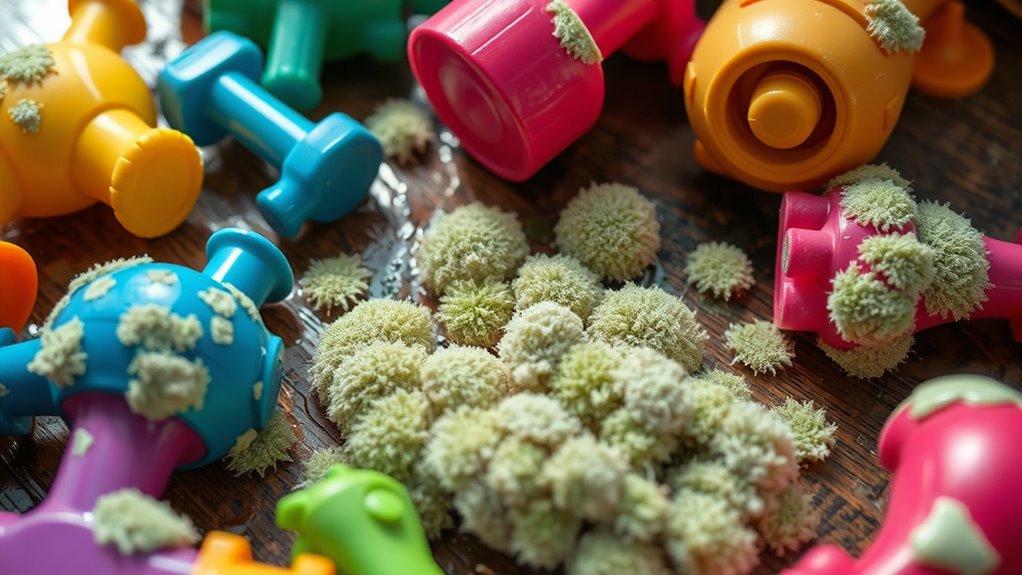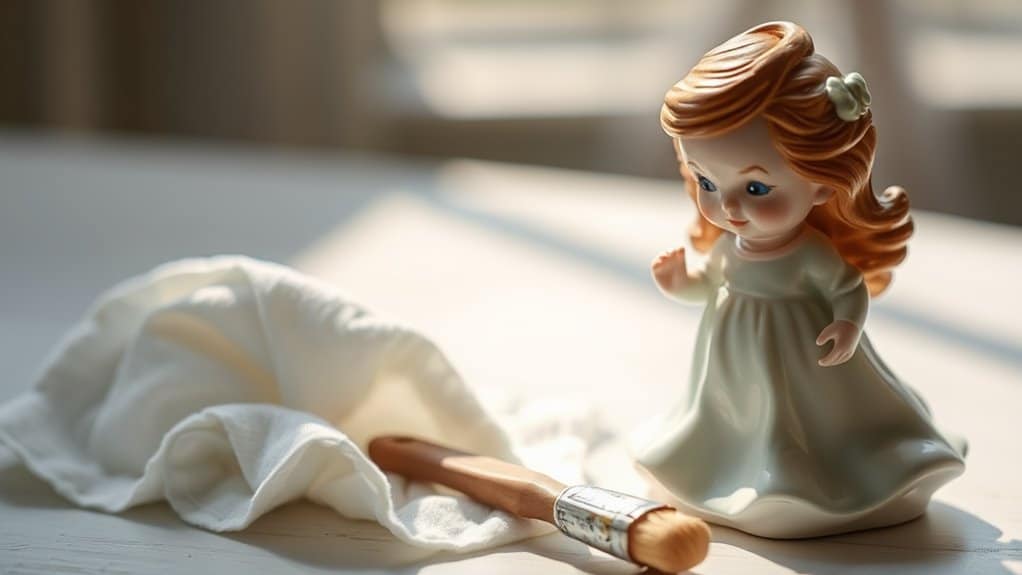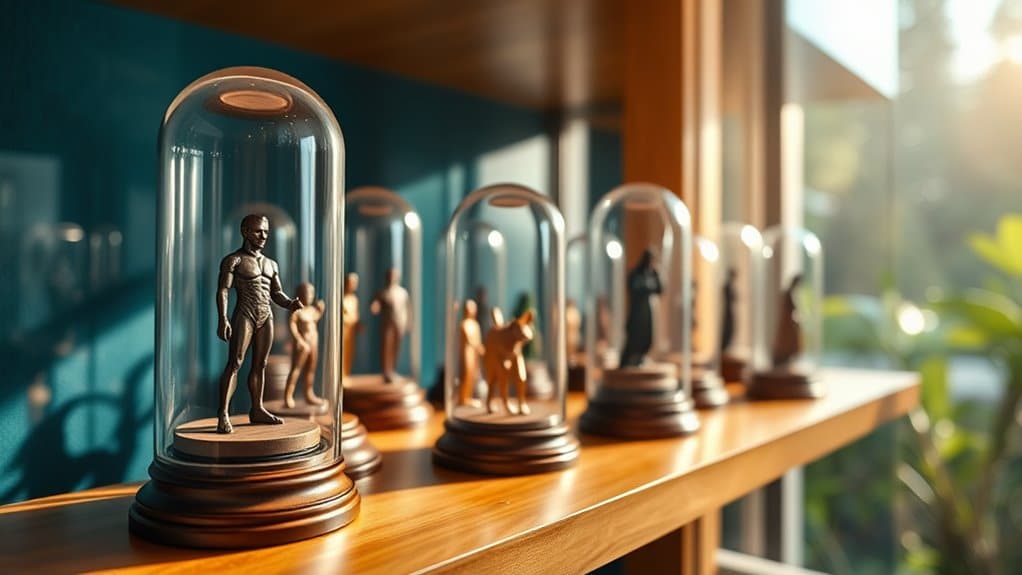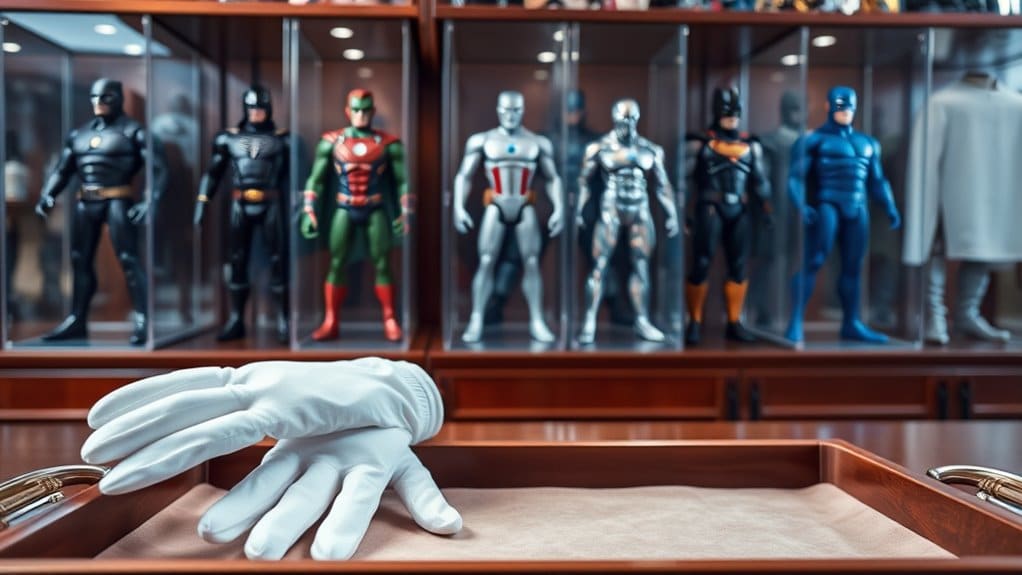Even though plastic is non-porous, mold can still find its way onto your child's toys. This often happens in warm, humid conditions that help mold spores thrive. Damp toys, especially after baths or outdoor play, serve as perfect habitats for mold, especially in hidden crevices. Incorporating regular cleaning, thorough drying, and proper storage can drastically reduce mold risks. Stay informed and discover more strategies to keep your child's play environment safe.
Understanding the Causes of Mold Growth on Plastic Toys
When it comes to plastic toys, mold growth often puzzles many, yet it's a surprisingly common issue. You might ask why mold targets plastic, given its non-porous nature. The answer lies in environmental factors. High humidity and warmth create a perfect breeding ground for mold spores. If toys are left damp after a bath or outdoor play, you're practically inviting mold to thrive. Additionally, toys often have crevices and hollow areas where water can linger unnoticed. Mold can also feed off dirt or organic residues left on toys. Even dust can contribute, providing nutrients mold needs to grow. By ensuring toys remain dry and clean, you can effectively minimize the risk of mold taking hold in your child's cherished playthings.
Identifying Common Mold-Prone Areas on Toys
Mold can sneak into various nooks and crannies of your child's toys, and it often hides in the most unexpected places. Pay close attention to toys with intricate designs, like those with small holes and seams. Bath toys are particularly mold-prone due to frequent exposure to water; they can retain moisture inside, creating an ideal environment for mold growth. Look for transparent toys where you can spot mold developing inside. Toys with removable parts are also potential culprits, as mold can grow in the gaps and connectors. Check for discoloration or musty odors, which are telltale signs that mold may be present. Regularly inspect toys, especially those stored in damp areas, to identify and address mold-prone spots before they become a problem.
Effective Cleaning Techniques for Mold Prevention
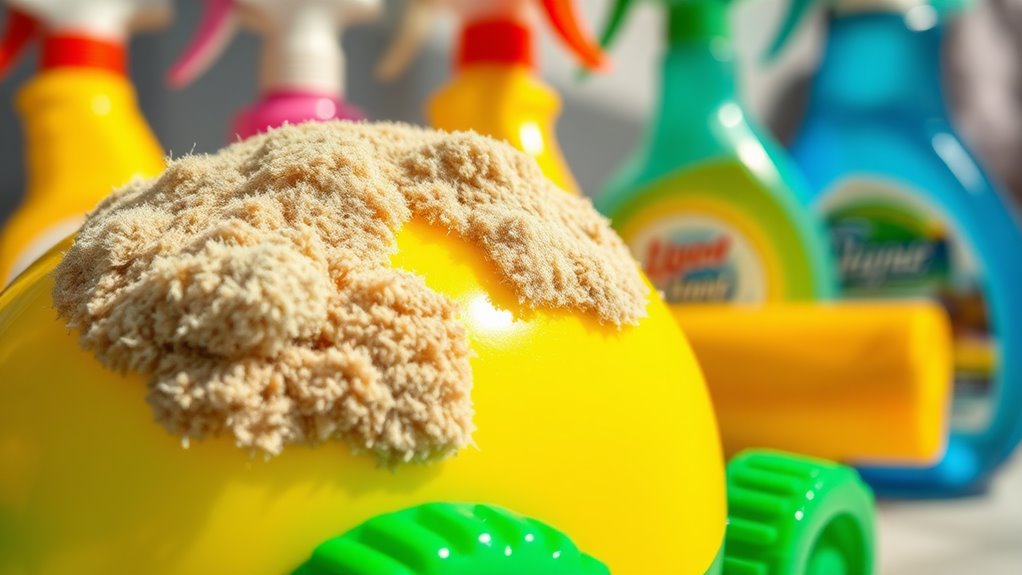
Although mold can find its way into many hidden spots on toys, maintaining a regular cleaning routine can greatly reduce the risk of mold growth. Start by washing the toys with warm soapy water. Use a soft brush to scrub crevices, guaranteeing you remove dirt and potential mold spores. Rinse thoroughly, as any soap residue can attract more mold. After cleaning, dry the toys completely using a clean towel. For items with intricate parts, air drying is effective. To further guarantee cleanliness, occasionally disinfect the toys with a solution of white vinegar and water. Spray, let sit for a few minutes, then wipe off. Regularly repeating this process keeps toys mold-free and safe, providing a healthier play environment for children.
Recommended Storage Practices to Minimize Mold Risk
How can you effectively store plastic toys to minimize mold risk? First, make certain that toys are completely dry before storing them. Moisture is mold's best friend, so wipe toys down thoroughly after cleaning or use. Choose a well-ventilated, dry area for storage. Basements and bathrooms aren't ideal due to their humidity levels. Instead, opt for a closet or a shelf in a room with good airflow. Consider using airtight containers to keep moisture out, but remember to dry toys before sealing them inside. Avoid overcrowding containers; airflow helps keep mold at bay. Finally, rotate toys regularly. This helps you catch any signs of mold early and guarantees each toy gets time to air out, reducing the risk of mold development.
Safe and Non-Toxic Solutions for Mold Removal
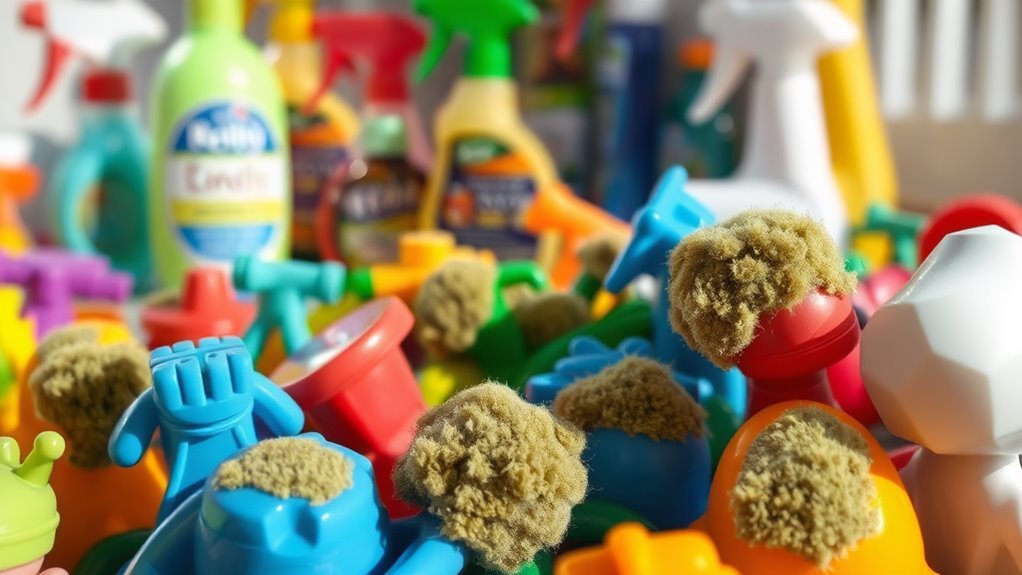
When dealing with mold on plastic toys, choosing safe and non-toxic solutions is essential for both your peace of mind and your child's health. You want to guarantee the toys are clean without exposing your child to harsh chemicals. Here are some effective options:
- White Vinegar: It's a natural disinfectant. Spray it on the affected areas, let it sit, then wipe it off.
- Baking Soda: Mix with water to form a paste. Apply, scrub, and rinse thoroughly to remove mold.
- Tea Tree Oil: Add a few drops to water and spray. It's a natural antifungal agent.
- Hydrogen Peroxide: Use a 3% solution to kill mold. Spray, let it bubble, then wipe clean.
These methods guarantee a safe play environment for your child.
Frequently Asked Questions
Can Mold on Toys Cause Health Issues for Children?
You should be cautious because mold on toys can cause health issues for children. Exposure might trigger allergies, respiratory problems, or infections. Always clean toys thoroughly and regularly to prevent mold growth and protect your child's health.
How Can I Identify if a Toy Is Mold-Resistant?
You can identify mold-resistant toys by checking labels for antimicrobial or mold-resistant materials. Look for non-porous surfaces and easy-to-clean designs. Manufacturers often advertise these features, so don't skip reading product descriptions and reviews before purchasing.
Are There Any Specific Toys That Are More Prone to Mold Growth?
You might notice that toys with hollow spaces, bath toys, or those exposed to moisture are more prone to mold. Look for toys without crevices or ones designed specifically to resist water for safer options.
What Signs Indicate a Toy Has Been Affected by Mold?
Imagine a toy as a sponge: it soaks up moisture and eventually reveals dark spots or a musty smell. You'll notice discoloration, fuzzy patches, or an off-putting odor, indicating mold's unwelcome presence.
Can Moldy Toys Be Recycled or Should They Be Discarded?
You should discard moldy toys, as recycling facilities typically can't process them safely. Mold poses health risks, and cleaning isn't always effective. Toss them to avoid spreading mold spores and protect your family's well-being.
At a Glance
You've got the tools to keep mold off your plastic toys, just like a superhero with a trusty sidekick. By knowing where mold hides and cleaning regularly, you're one step ahead. Store toys in dry areas, and use safe solutions when mold tries to make a comeback. With these strategies, you'll maintain a fun and safe play environment. Remember, tackling mold doesn't have to be a chore—it's all about creating a healthy space for play.

